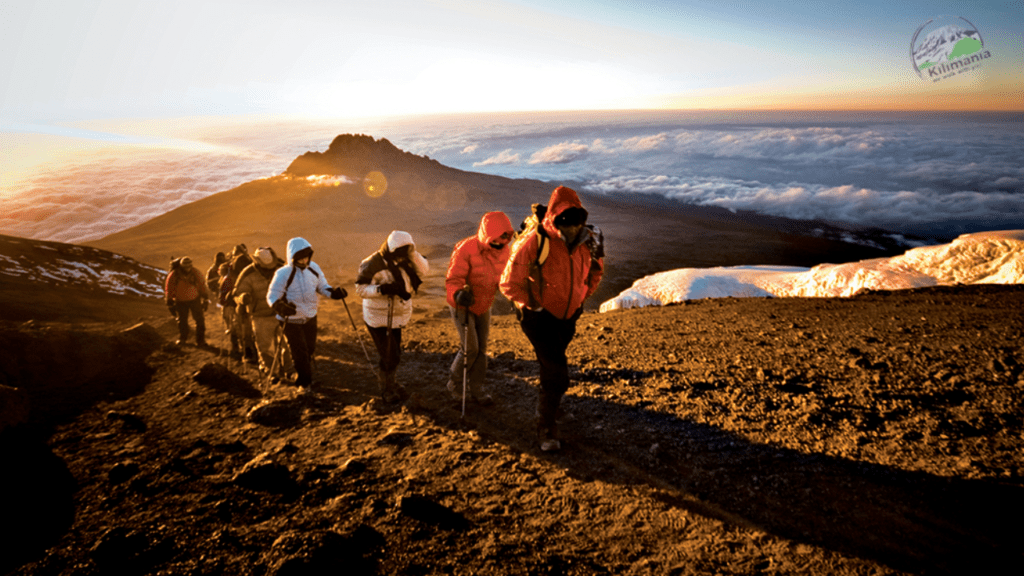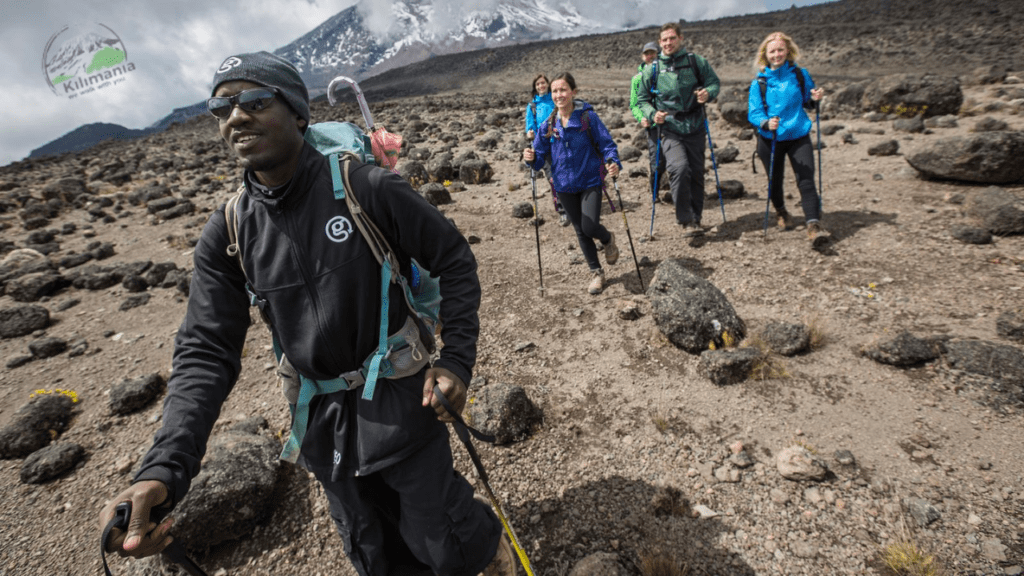
Mount Kilimanjaro Climb: A Life-Changing Adventure to Africa
Introduction:
The Mount Kilimanjaro Climb is a once-in-a-lifetime adventure that takes trekkers to the highest peak in Africa standing at 5,895 meters (19,341 feet) above sea level. Unlike many other high-altitude summits, Kilimanjaro requires no technical climbing skills, making it one of the most accessible major peaks in the world. Climbers journey through diverse ecosystems from lush rainforest to alpine desert and glacial summitex periencing breathtaking views and incredible biodiversity along the way. Whether you’re a seasoned hiker or a first-time adventurer, the Kilimanjaro climb offers a physically rewarding and deeply inspiring experience, especially when guided by expert local teams like Kilimania.
With proper preparation, the right route, and a trusted operator, anyone in good health can stand on the Roof of Africa. It’s a transformative experience that tests your limits, connects you to nature, and rewards you with some of the most stunning views in Africa. Towering at 5,895 meters (19,341 feet), Kilimanjaro is the tallest mountain on the continent and the world’s highest free-standing peak. This iconic summit draws trekkers from around the globe for one reason.
Why Choose to Climb Mount Kilimanjaro?
The appeal of climbing Kilimanjaro lies in its accessibility. Unlike Everest or other high-altitude peaks that demand ropes, axes, or climbing experience, Kilimanjaro requires only strong physical conditioning, mental toughness, and a good guide. The mountain’s trails cut through five distinct ecological zones, from tropical forests and alpine deserts to icy glaciers near the summit. Every step offers new scenery and challenges.
Beyond the physical rewards, there is something deeply spiritual and empowering about standing on the “Roof of Africa”—a moment of quiet triumph that remains with climbers long after they descend.
Understanding the Different Routes to the Summit
Several established routes lead to Uhuru Peak, and choosing the right one will affect your success rate, experience, and enjoyment of the trek.
The Machame Route:
Nicknamed the “Whiskey Route” due to its challenging terrain and rugged beauty, this trail offers spectacular views and high success rates due to excellent acclimatization profiles. It takes six to seven days to complete and is ideal for those who want a scenic, moderately challenging journey.
The Marangu Route:
Often referred to as the “Coca-Cola Route” for its hut accommodations and easier path, this route is favored by beginners. However, its short five to six-day schedule allows little time for acclimatization, resulting in a lower summit success rate.
The Lemosho Route:

This is arguably the most scenic route, starting on the western slopes. It spans seven to eight days and offers great acclimatization and a peaceful trail experience with fewer crowds, especially in the first few days.
The Rongai Route:
Approaching Kilimanjaro from the north, the Rongai Route is drier and less frequented. It is slightly easier than the others and is well-suited for those trekking during the rainy season.
The Northern Circuit Route:
This is the longest route on the mountain, taking nine days. It offers the highest success rate due to slow and steady acclimatization and is ideal for trekkers seeking solitude and the best chance to summit.
The Best Time for a Mount Kilimanjaro Climb
Trekking Kilimanjaro is possible year-round, but two main climbing seasons offer the best conditions.
January to March:
This period offers mild temperatures, clear skies, and fewer crowds. It’s a great time for climbers seeking a quiet and cool trek, though snow is more likely near the summit.
June to October:
These are the most popular months due to minimal rainfall and sunny weather. Visibility is excellent, and trail conditions are at their best, making it ideal for your Mount Kilimanjaro climb.
Avoid April, May, and November due to heavy rains, slippery paths, and poor visibility.
How to Prepare Physically for Climbing Kilimanjaro
A Mount Kilimanjaro climb is physically demanding and requires thorough preparation, particularly for those not used to high altitudes.
Endurance Building:
Hiking for hours daily over multiple days demands stamina. Activities like trail walking, running, cycling, and stair climbing are excellent for building cardiovascular strength and leg endurance.
Strength Conditioning:
To manage the elevation gain and descents, it’s essential to strengthen the muscles in your legs, back, and core. Bodyweight exercises like lunges, squats, planks, and step-ups help condition your body for mountain terrain.
Altitude Acclimatization:
Altitude sickness is a real risk. While most people can’t train at elevation, doing multi-day hikes at high altitudes (if accessible) or using altitude simulation masks can help. Proper route selection and pacing on the mountain remain the most effective ways to acclimatize.
Mental Preparation:
Mental resilience is just as important as physical readiness. Prepare for tough nights, cold temperatures, and long treks. The summit day alone can last 12–16 hours of hiking.
What’s Included in Kilimanjaro Trekking Packages?
When you book a Kilimanjaro guided tour with a trusted company like Kilimania, you receive a comprehensive experience that ensures safety and comfort.
Professional Guides:
Kilimania’s guides are licensed, experienced, and trained in high-altitude response. They manage the group’s pace, monitor health, and provide valuable insight into the landscape and local culture.
Porter Support:
Porters carry tents, food, and gear—lightening your load and ensuring a more enjoyable climb. Ethical companies also ensure that porters receive fair wages and proper equipment.
Meals and Accommodation:
All meals on the mountain are included, with trained cooks preparing energy-rich meals. Accommodations consist of quality camping equipment or huts (on Marangu).
Park Fees and Permits:
Your climb includes necessary Kilimanjaro National Park fees, conservation charges, and rescue insurance.
The Importance of Responsible and Ethical Climbing

Ethical travel is vital on Mount Kilimanjaro. Organizations like the Kilimanjaro Porters Assistance Project (KPAP) fight for porter welfare, ensuring workers are fairly treated, properly equipped, and adequately compensated.
When choosing a tour operator, prioritize those who are KPAP-certified and committed to environmental sustainability. Your climb should support—not exploit—the local workforce and natural resources.
Expect on Summit Day
Summit day typically begins at midnight. After a few hours of rest at base camp (usually Barafu or Kibo), you’ll start your ascent under a sky full of stars. It’s cold, steep, and mentally exhausting. Your guide will encourage you to move slowly, stay hydrated, and take breaks.
As you reach Stella Point on the crater rim at sunrise, the sense of achievement begins to take hold. From there, it’s about an hour to Uhuru Peak—the true summit of Mount Kilimanjaro.
The panoramic views, the glow of morning light on glaciers, and the sheer accomplishment make the climb one of the most unforgettable moments of a lifetime.
Relaxing and Exploring After the Climb
After your trek, consider unwinding with a safari or a beach retreat. Tanzania offers extraordinary experiences:
Safari in the Serengeti or Ngorongoro Crater
Tanzania is one of the best places in the world for a wildlife safari. You’ll witness the Big Five, migration herds, and untouched wilderness.
Beach Escape in Zanzibar
After the climb, many travelers head to Zanzibar for rest and relaxation. White sandy beaches, crystal-clear water, and spice plantations await.
Final Thoughts:
The Mount Kilimanjaro climb is a journey of a lifetime—physically demanding but immensely rewarding. With expert guidance, proper planning, and ethical practices, anyone with determination and preparation can stand atop Africa’s highest peak.
Expert Recommendations for a Successful Climb
Select the Right Route:
Choose a route that matches your fitness level and allows ample acclimatization time.
Train for the Trek:
Start training months in advance. Focus on endurance, strength, and mental fortitude.
Choose a Reputable Tour Operator:
Go with a company like Kilimania that values safety, sustainability, and porter welfare.
Acclimatize Gradually:
Avoid rushing to the summit. Listen to your body and follow your guide’s pace.
Stay Positive:
Altitude trekking is as much mental as physical. Stay motivated, and you’ll reach your goal.
Frequently Asked Questions
Is climbing Mount Kilimanjaro safe?
Yes, when done with a licensed guide and proper preparation. Always follow your guide’s advice and listen to your body.
Do I need technical climbing experience?
No. Kilimanjaro is a trekking peak, which means no ropes or special climbing gear are required.
How long does the climb take?
Most routes take 6–9 days round-trip, depending on the trail and your acclimatization strategy.
What’s the success rate?
It varies by route. Longer routes like the Lemosho or Northern Circuit have higher success rates due to gradual elevation gain.
What’s the cost of a Kilimanjaro climb?
Packages typically range from $1,500 to $4,000 depending on duration, services, and route. Always choose quality and safety over the cheapest option.
All Categories
Recent Posts
Kilimanjaro Trekking Tours: Climbing Mount Kilimanjaro
Mount Kilimanjaro Climb: A Life-Changing Adventure to Africa
Ngorongoro Crater Safari: A Journey into Tanzania’s Wildlife Heart
Tags

Kilimanjaro
Quick booking process
Call us, we are open 24/7
+255 756 449 990




